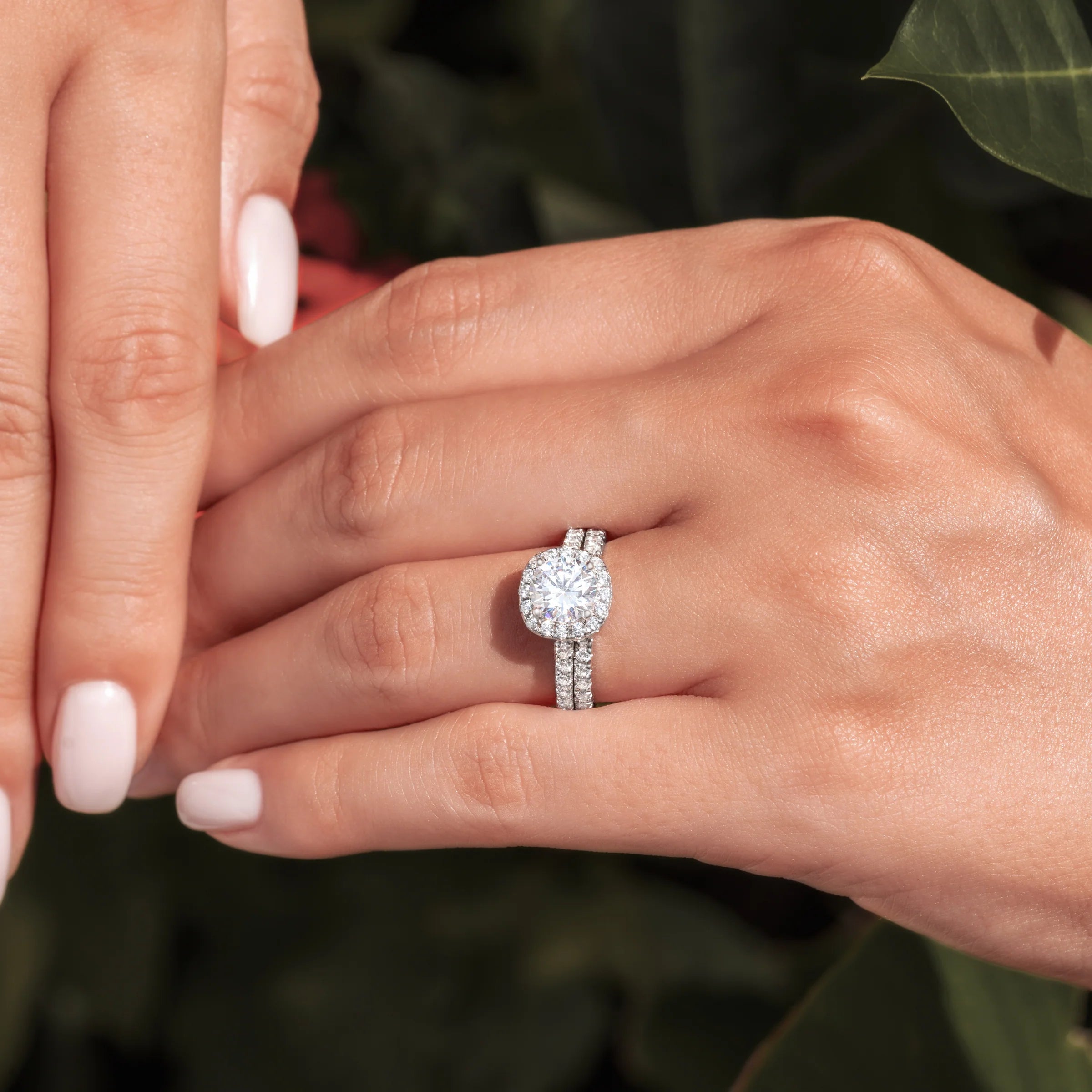
Myths and Facts: What You Should Know About Moissanite vs Diamond
When it comes to choosing between moissanite and diamond, most people are familiar with diamonds as the traditional choice. However, moissanite has become a popular alternative, offering unique advantages. There are a lot of myths floating around about both gemstones, and today, we’ll break down the key facts.
Myth #1: Moissanite and Diamonds Look Completely Different
Fact: They Look Similar, but There Are Unique Differences
Moissanite and diamonds look similar at first glance, but they differ in brilliance and fire. Diamonds give off a classic, white sparkle, while moissanite’s sparkle is slightly more colorful due to its higher refractive index. This gives moissanite a rainbow-like, fiery effect.
For some, this extra sparkle is attractive; for others, it might not offer the same classic look. But under regular light and at a distance, the difference is subtle, making moissanite an attractive option for many. Explore our The Spark Double Row Baguette and Round Moissanite Ring for a closer look at moissanite’s unique qualities.
Myth #2: Moissanite Is “Fake” Diamond
Fact: Moissanite Is Its Own Unique Gemstone
Some believe moissanite is a "fake" or imitation diamond, but it’s actually a unique gemstone with its own chemical structure—silicon carbide instead of carbon. Originally discovered in a meteor crater in 1893, natural moissanite is extremely rare, so nearly all moissanite on the market today is lab-grown. This controlled production makes moissanite a sustainable choice for those who want an eco-friendly gemstone.
Myth #3: Diamonds Are Always More Durable Than Moissanite
Fact: Both Are Durable, but Diamonds Are Slightly Harder
Diamonds top the Mohs hardness scale at 10, making them the hardest naturally occurring substance. Moissanite is close behind at 9.25, meaning it’s still highly scratch-resistant and can withstand daily wear. While moissanite is durable enough for jewelry, only another diamond can scratch it, which makes both stones excellent for engagement rings.
If you’re considering a durable, everyday piece, the The Pinnacle Solitaire Round-Cut Moissanite Engagement Ring is a great example of a reliable choice.
Myth #4: Moissanite Costs Just as Much as Diamonds
Fact: Moissanite Is Far More Affordable
One of the biggest draws of moissanite is its affordability. On average, a one-carat moissanite ring might cost between $300 and $1,000, while a one-carat diamond can range anywhere from $2,000 to over $20,000 depending on quality. This significant price difference allows buyers to get a larger or higher-quality stone for their budget without compromising on appearance or durability.
For a stylish and affordable option, check out our The Harmony Round-Cut Moissanite Eternity Band, which captures the beauty of moissanite without the diamond price tag.
Myth #5: Moissanite Will Turn Yellow Over Time
Fact: Moissanite Maintains Its Color Long-Term
High-quality moissanite typically maintains its color over time. Early moissanite stones sometimes showed a yellowish tint, but modern production techniques have improved color stability, offering options from colorless (D-F) to near-colorless (G-I). Unlike lower-grade diamonds that may develop a yellowish tint, moissanite's color remains stable, making it a durable and vibrant choice.
Myth #6: Moissanite Has No Resale Value Compared to Diamonds
Fact: Diamonds Generally Retain Higher Resale Value, but That’s Changing
Diamonds have traditionally held a higher resale value, but as awareness grows, moissanite’s resale appeal is increasing too. Diamonds often maintain some market value due to their rarity, but many consumers are increasingly interested in ethically sourced and sustainable gems, making moissanite more attractive and competitive in resale markets.
Myth #7: Only Diamonds Are Ethically Sourced
Fact: Moissanite Is Often the More Ethical Choice
Diamonds are often linked to environmental and ethical issues due to the mining process. While many diamond retailers now follow ethical sourcing practices, lab-grown moissanite eliminates concerns about mining, labor conditions, and environmental impact. For buyers focused on sustainability, moissanite offers an eco-friendly option without compromising beauty or durability. Explore the The Vertex Solitaire Round-Cut Moissanite Ring with Side Accents as an ethical and sustainable choice.
Myth #8: Moissanite Doesn’t Hold Sentimental Value Like a Diamond
Fact: Sentiment Comes from the Story, Not the Stone
The belief that diamonds inherently hold sentimental value is largely cultural. Moissanite can hold just as much meaning as a diamond, especially for those who value its affordability, ethical sourcing, or unique brilliance. Ultimately, the sentiment behind a ring comes from the relationship it represents—not the stone itself.
Myth #9: Moissanite Isn’t “Luxury”
Fact: Moissanite Offers a Luxury Look at a Fraction of the Cost
With the look of a high-quality gemstone and the longevity to match, moissanite is increasingly recognized in the jewelry industry as a luxurious, viable alternative to diamonds. Its affordability and sustainability appeal to modern consumers seeking both value and style in their fine jewelry. Discover luxury on a budget with pieces like The Opus Solitaire Round-Cut Moissanite with Pave Band, designed to add elegance to any collection.
Conclusion: Finding the Right Gemstone for You
Whether you choose moissanite or diamond, it’s all about what matters most to you—whether it’s cost, sparkle, durability, or ethical considerations. Awareness Avenue offers a range of high-quality gemstones to help you find the ring that best represents your story.
Consider the facts, set aside the myths, and pick the gemstone that truly resonates with you.



2 comments
I enjoy the sparkle and shine of the moissanite stones my birth stone is diamond a the moissanite is just as beautiful a stone.Thank you
Margaret Pospisil
Thank you for the clarification!
Margaret Meyers-Nix
Leave a comment
This site is protected by hCaptcha and the hCaptcha Privacy Policy and Terms of Service apply.